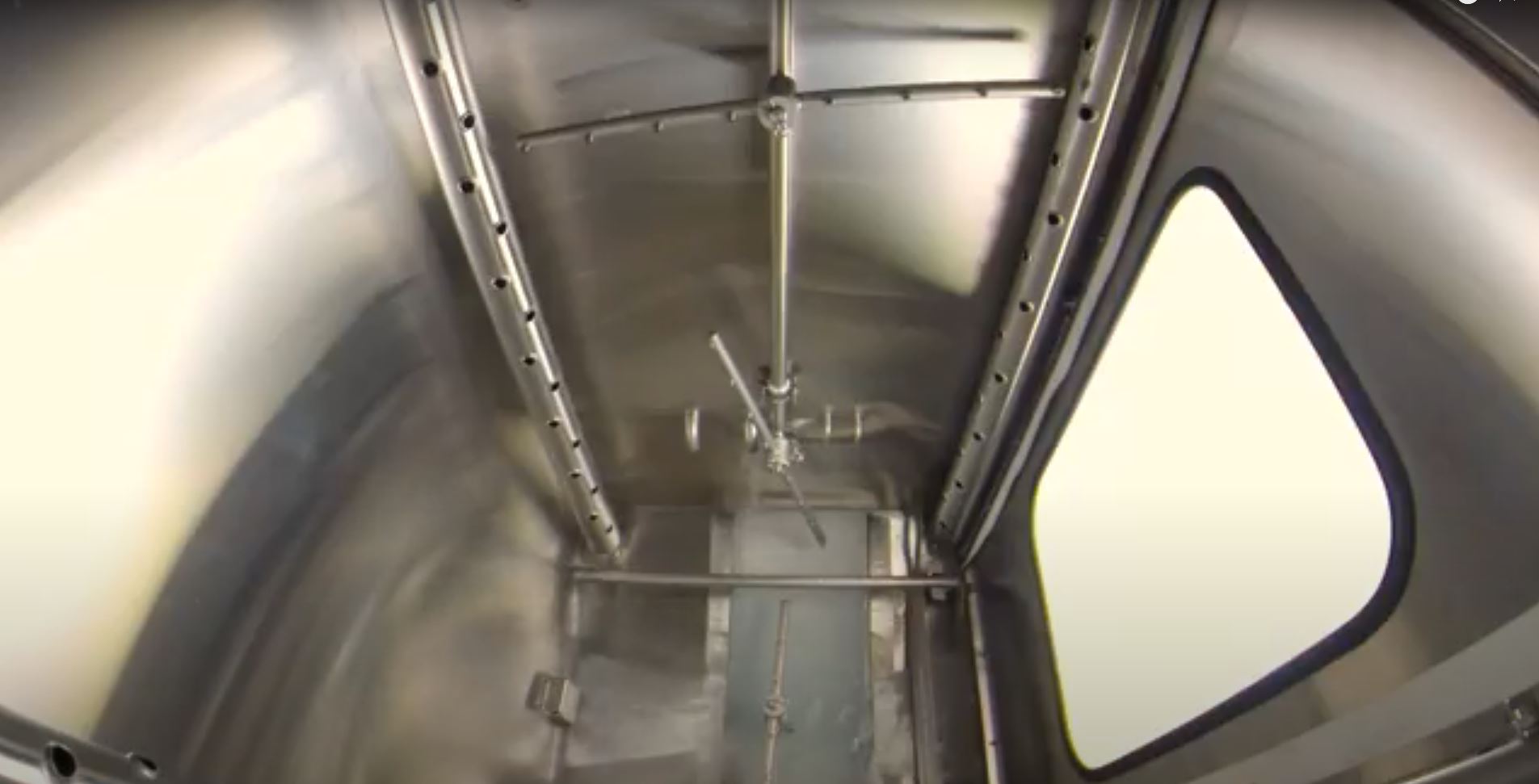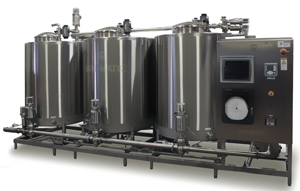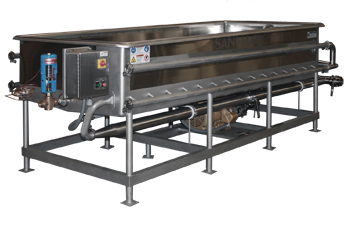
![]() We get questions everyday from customers asking about CIP and COP systems, so we asked the team at Sani-Matic, an engineer, designer, and manufacturer of CIP and COP systems to answer some of the questions we're asked most. Here's what they had to say.
We get questions everyday from customers asking about CIP and COP systems, so we asked the team at Sani-Matic, an engineer, designer, and manufacturer of CIP and COP systems to answer some of the questions we're asked most. Here's what they had to say.
A single-tank (Single-use) Clean In Place system uses the pre-rinse cycle water, detergent wash, post rinse cycle water, and sanitize solution once and then sends each to the drain. Based on operating costs (costs of CIP chemicals, water, water disposal, steam, and time) a single-tank system costs the most to use and operate. A single-tank CIP system may be appropriate if it is used infrequently.
A 2-tank (Detergent Re-use) system recaptures the detergent wash solution at the end of each wash step. After making up the loss of water and detergent from the previous wash, it is reused for the next wash step. This often saves 85 to 90 percent of the water and detergent— and much of the steam (in the form of hot wash solution)— in an efficiently operating clean in place system compared to a 1-tank system.

A 3-tank (Detergent and Rinse Re-use) system, pictured to the right, recaptures the detergent wash solution at the end of each wash step and the post rinse solution at the end of each post rinse step. The post rinse solution is used for the next pre-rinse step. This typically saves 100 percent of the fresh water that would have been used in this step compared to a single-tank or 2-tank CIP system. It also has the added benefit of typically being warmer and having some detergent carryover, which aid in pre-rinsing. As with the 2-tank CIP system, there are significant savings in water, detergent and steam in a 3-tank CIP system compared to a single-tank system.
No. Each facility’s process is different, as are the utilities available. To provide a sanitary cleaning solution, the CIP system requires customization.
Absolutely. You can choose to have the programming done for you by the system manufacturer's in-house engineers or, if your plant has programming capabilities, you can program the controls used in the CIP system yourself. Generally speaking, clean in place system skids can be customized with the specific programming controls your plant uses (i.e. Siemens, Allen-Bradley).
All applications are different and how to clean them depends greatly on the soils that need to be removed during the cleaning process. But, yes, you can CIP conveyor belts by installing spray bars over and/or under the conveyors.
 WHAT IS THE TYPICAL WASH TIME FOR A COP SYSTEM?
WHAT IS THE TYPICAL WASH TIME FOR A COP SYSTEM?A COP wash cycle length depends on the items you are washing and the soil type. However, most components can be washed in 20–30 minutes.
COP sizing depends on your answers to the following questions:
Review the answers to these questions so you may determine the correct COP tank size for your needs. For example, if all of your parts will fit into a 6-foot tank, with the exception of four hoses that are longer than 6-feet, you may want to stick with a 6-foot tank and wash the hoses by hand. Adding the extra feet onto your tank to accommodate only a few items will cost you more on the investment and in ongoing utility expenses.
To learn about how to specify an efficient CIP system for your plant, refer to our eBook, The Plant Engineer's Guide to Specifying CIP Systems!
These Stories on CIP Systems
Headquarters and Service Center
Located outside Green Bay, WI
707 Ford Street
Kimberly, WI 54136
920-733-4425
OptiFlow Design and Build Center
1002 Truman Street
Kimberly, WI 54136
920-733-4425
Burnsville Service Center
12265 Nicollet Avenue
Burnsville, MN 55337
952-444-1949
Grand Rapids Service Center
26489 Industrial Blvd
Cohasset, MN 55721
952-444-1949
© Copyright 2024. Crane Engineering. All Rights Reserved. Privacy Policy.